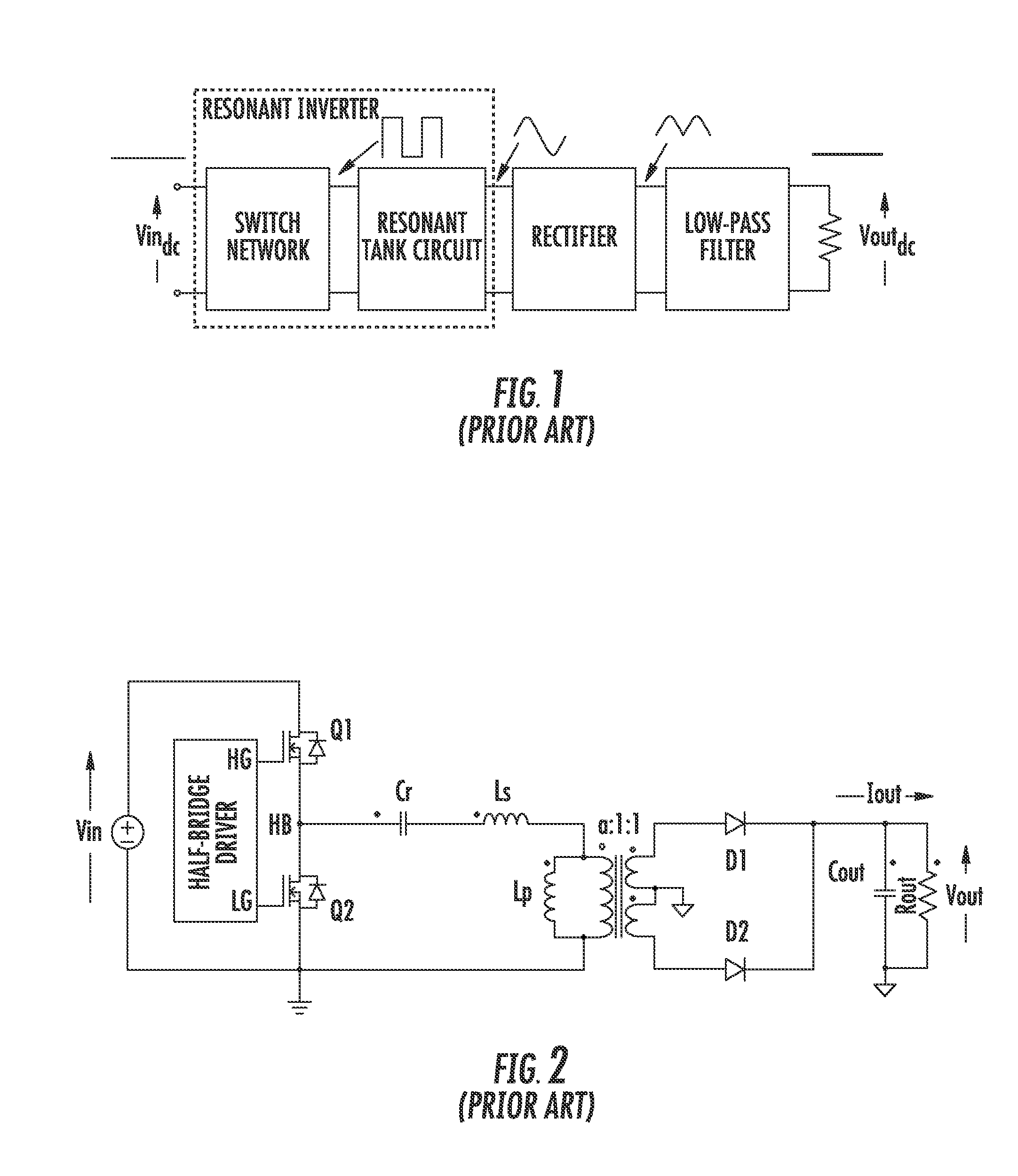Multi-phase resonant converter and method of controlling it
a multi-phase resonant converter and phase circuit technology, applied in the field of switching resonant voltage converters, can solve the problems of inactive phases, different currents in the various phase circuits, and serious obstacles to the implementation of “interleaving” techniques in multi-phase resonant voltage converters, and achieve good current balance
- Summary
- Abstract
- Description
- Claims
- Application Information
AI Technical Summary
Benefits of technology
Problems solved by technology
Method used
Image
Examples
Embodiment Construction
[0050]Several exemplary embodiments of this invention will be described making reference to a three-phase LLC resonant voltage converter, but the same considerations hold also for multi-phase resonant voltage converters of a different type and / or with any other number of phases.
[0051]A three-phase LLC resonant DC-DC voltage converter for limiting unbalance among phase currents is illustrated in FIG. 9. The three LLC resonant circuits on the primary side are connected to a floating common node (real neutral point) different from the prior art converter of FIG. 4 where the neutral point is grounded. The multi-phase resonant DC-DC voltage converter of this disclosure may be controlled using the same driving signals phased apart by 120° of the half-bridges of the prior art converter of FIG. 4.
[0052]The fact that the potential of the neutral-point is not grounded, introduces a “negative feedback” that tends to balance the working points of the single phase circuits, thus preventing a sin...
PUM
 Login to View More
Login to View More Abstract
Description
Claims
Application Information
 Login to View More
Login to View More - R&D
- Intellectual Property
- Life Sciences
- Materials
- Tech Scout
- Unparalleled Data Quality
- Higher Quality Content
- 60% Fewer Hallucinations
Browse by: Latest US Patents, China's latest patents, Technical Efficacy Thesaurus, Application Domain, Technology Topic, Popular Technical Reports.
© 2025 PatSnap. All rights reserved.Legal|Privacy policy|Modern Slavery Act Transparency Statement|Sitemap|About US| Contact US: help@patsnap.com



